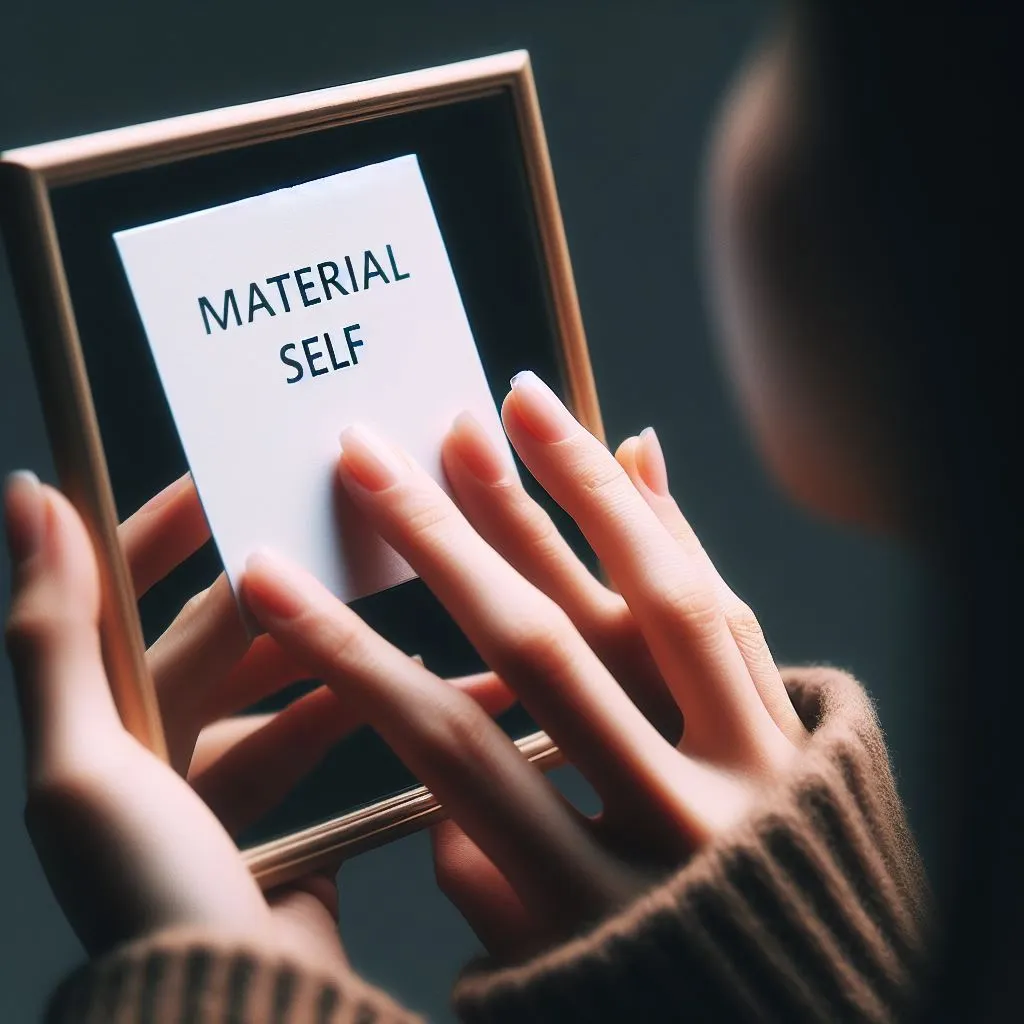Ever wondered how your things tell your story? Psychologists check out our “material self” – how what we own shows who we are. Different scientists and philosophers have theorized about the concept of material self over the years. So what exactly it is? We explore definition with example and different point of view of scientists, So lets start!
The Heartbeat of Our Identity – Material Self
When we talk about material self, we are referring to the aspect of personal identity and self-concept that is tied to the physical and tangible things we own. This includes our body, possessions, wealth status symbols, and lifestyle associated with our material wealth and social economic status.
How Material Self Develop?
The material self develops from a young age as we acquire possessions and learn how others perceive our looks. It includes:
Our belongings – The clothes we wear, devices we use, car we drive etc. Owning certain brands/status symbols leads us to define ourselves through materialism.
Money and career – Our financial status, job role and paycheck influence self-worth. Layoffs can threaten one’s material identity.
Physical appearance – Features like our body, hair, outfits and accessories impact how we present ourselves. Beauty is tied to self-esteem for many.
Lifestyle – Conspicuous consumption makes a statement. Flaunting wealth/success through luxury purchases shapes our material identity.
Material Self in the Real World
- A father spends lavishly on the latest gadgets and video games for his children so they see him as the “cool dad”. This makes up part of his own identity through the perceive status of the gifts.
- Students define themselves by the university they attend, hoping the branded degree improves their career prospects and social standing. The school name becomes part of their material identity.
- Car enthusiasts immerse themselves in expensive hobby cars, motorcycle clubs etc. Owning rare vehicles fosters a lifestyle and community that strengthens their material sense of self.
- Social media influencers curate highlights of exotic locations, clothing hauls and material extras to craft an image of luxury and aspiration for followers. Likes and comments affirm their identity tied to possessions.
Theories on Material Self
There are several scientific theories that attempt to explain material self. Here are three of the most prominent:
Sigmund Freud – The Depths of the Unconscious Material Self
In the hidden chambers of the mind, Freud unveils the secrets of our Material Self
Imagine a vast iceberg floating in the ocean – only a fraction visible above the surface. Sigmund Freud, the pioneering psychoanalyst, likened our Material Self to the tip of this iceberg. He proposed that our conscious possessions represent only a small part of our Material Self, with the bulk submerged in the unconscious. The emotions attached to these possessions, Freud argued, shape our identity and influence our behavior in ways beyond our awareness.
William James: The Extended Self
William James, a pioneering American psychologist, introduced the concept of the “extended self.” He believed that our identity extends beyond our physical bodies to include the possessions we hold dear. James famously stated, “A man’s self is the sum total of all that he can call his.”
George Herbert Mead: Social Interaction and Material Self
George Herbert Mead, a sociologist and philosopher, focused on the social aspect of the Material Self. He proposed that our understanding of self develops through social interaction, and our possessions play a crucial role in shaping this identity. Mead emphasized, “The self is something which has a development; it is not initially there, at birth, but arises in the process of social experience.”


